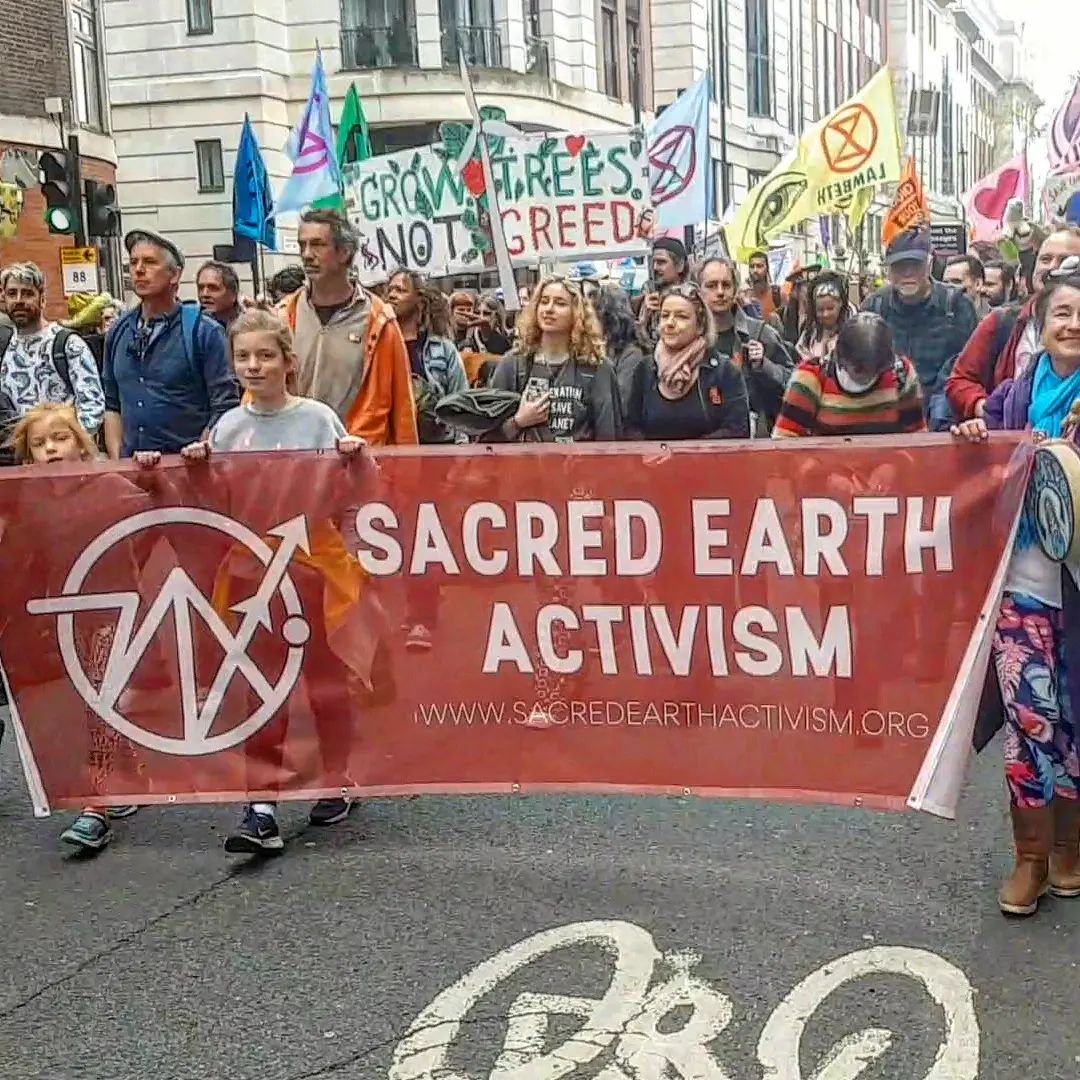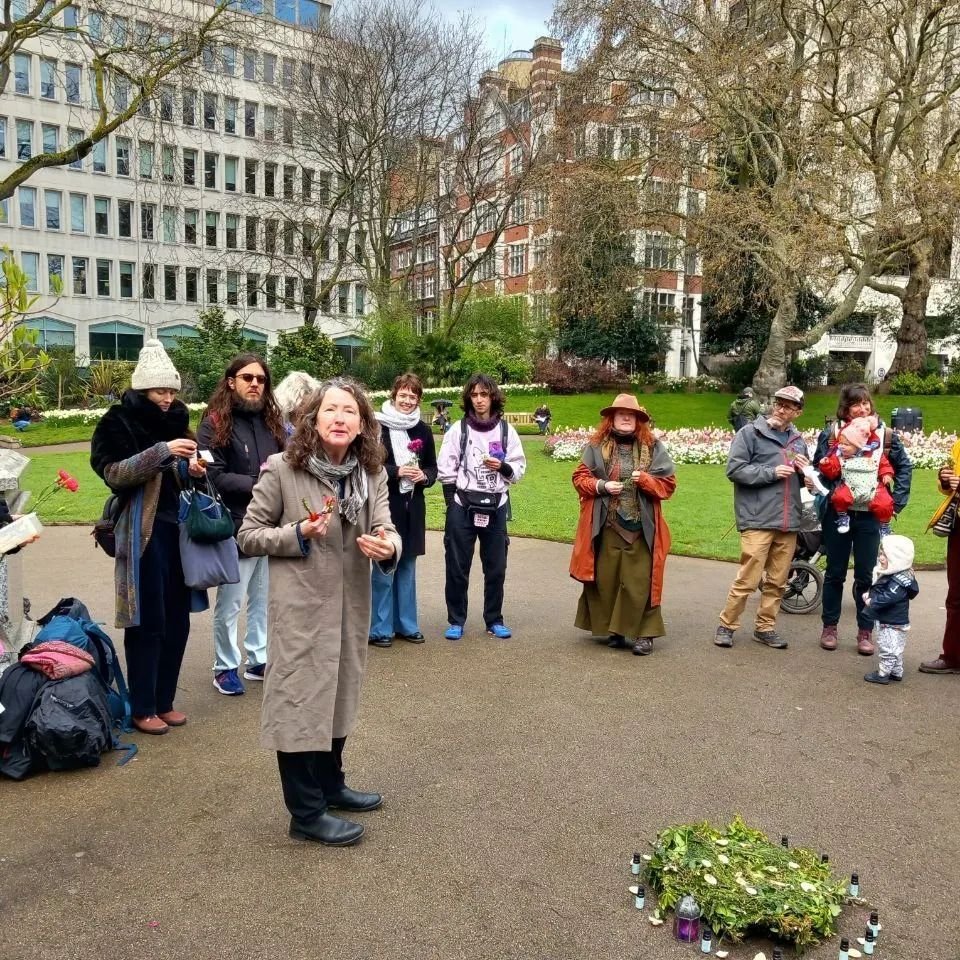Why embedding the sacred in protest actions matters
Sacred Earth Activism’s collaboration with Bigger Picture activists during Extinction Rebellion’s The Big One in London last month offered clear insights into the importance of embedding the sacred into such actions.
The four-day protest, which took place between 21-24 April, was held near the Houses of Parliament in Westminster and supported by more than 200 organisations, including Greenpeace, Fuel Poverty Action and Rewilding Britain. The aim was to demonstrate the huge public support behind transformative action to tackle the current climate and ecological emergency as well as growing inequality.
As one sacred activist said: “The Big One felt like real progress, that it was about valuing, and building, relationships between activism groups over roadblocks. It felt much more holistic in its approach than previous XR actions - a better balance of Yin and Yang, with Yin being the Sacred Earth visionary approach and Yang being big, disruptive actions.”
A fellow activist agreed. “The actions we took were about planetary repair and were very matrifocal as opposed to patriarchal,” he said. “It’s very important work at this time to be connecting with the feminine as it’s the dominance of masculine energies that have created the crisis we’re in.”
To reinforce the point, a third added: “Being part of our group felt very gentle and grounding amid the colour and chaos of the bigger gathering with all its multi parts, and it flowed harmoniously like a giant river.”
Highlights of sacred actions for The Big One
Some of the high spots of these sacred actions in the words of participants included:
“The water ceremony was a highlight, especially as it was in the park at Embankment among ordinary members of the public. I really liked that natural integration and that people were free to join in – and they did!”
“We gave water blessings of love and healing to an ex-crack addict. He was so moved and it had such a powerful effect on him that he could barely walk afterwards. He said: “I’ll never ever take crack again. This is my crack.””
“As we carried the Despacho through the crowds and on the marches, it drew smiles from people who responded to the beauty and energies in it. A Despacho is a living prayer and I really felt how this, of all the ceremonies and sacred actions and songs, really touched us, and touched everyone we met and walked past.”
Why incorporate the sacred in actions?
As to why including the sacred in actions, such as The Big One, is so important, there are a whole range of reasons, believe the sacred activists. Here is a selection, again in their own words:
“The Big One was designed as mobilisation rather than disruption and I felt such a strong connection with spirit when going into Parliament. That sense of connection and support wouldn’t have been there without including spirit in what we were doing.”
“Involving the sacred makes a difference to people mentally, emotionally and physiologically and enables them to take a break from the sense of despair, anger and overwhelm they may be feeling. It builds connections and community around our shared sense of reverence for life and the highest possibilities available to us rather than focus on the sorry state we’re in.”
“Ceremony is a way to pause. We give ourselves time to listen. There’s humility, there’s harmony, and it’s an example of ‘embodied relational presence’. It’s also a way to bring the new world structure to life, to bring in the energies we’re wanting to foster and create with.”
The importance of connecting to the sacred
Moreover, as another sacred activist pointed out there is very real demand for connecting to the sacred, whether people feel able to express their desire to do so or not.
“In all we were doing, it felt as if we were giving people permission to feel and connect with nature, spirit and each other,” she explained.
A fellow activist added that ceremony also plays a crucial role when people are working together to try and vision the future.
“Ceremony brings a profound uplifting, joyful, moving element, which grounds and stills. And in the context of activism, it’s an action, a sacred action, which plays its part alongside speeches, disruptions and Citizens’ Assemblies,” she concluded.



